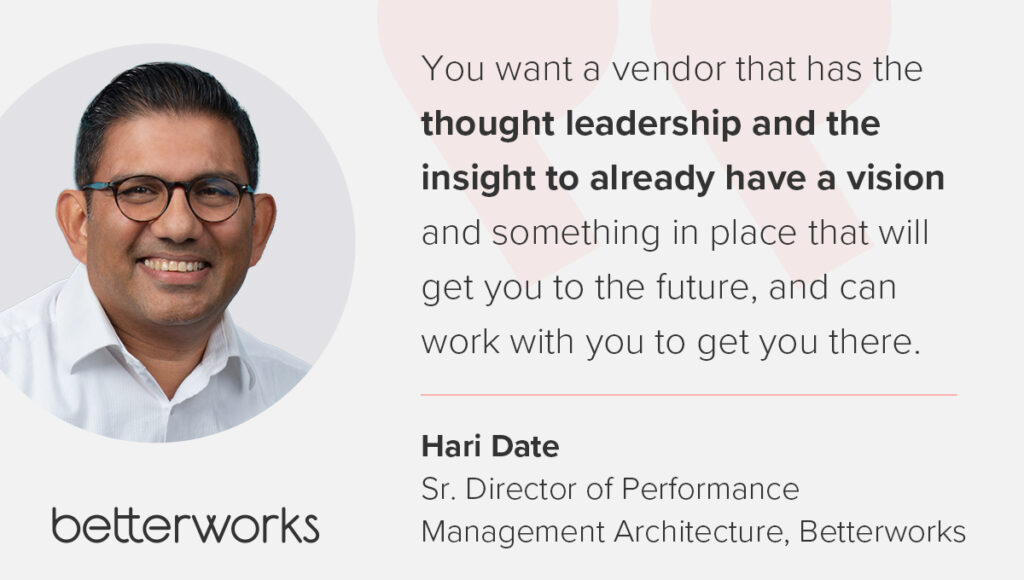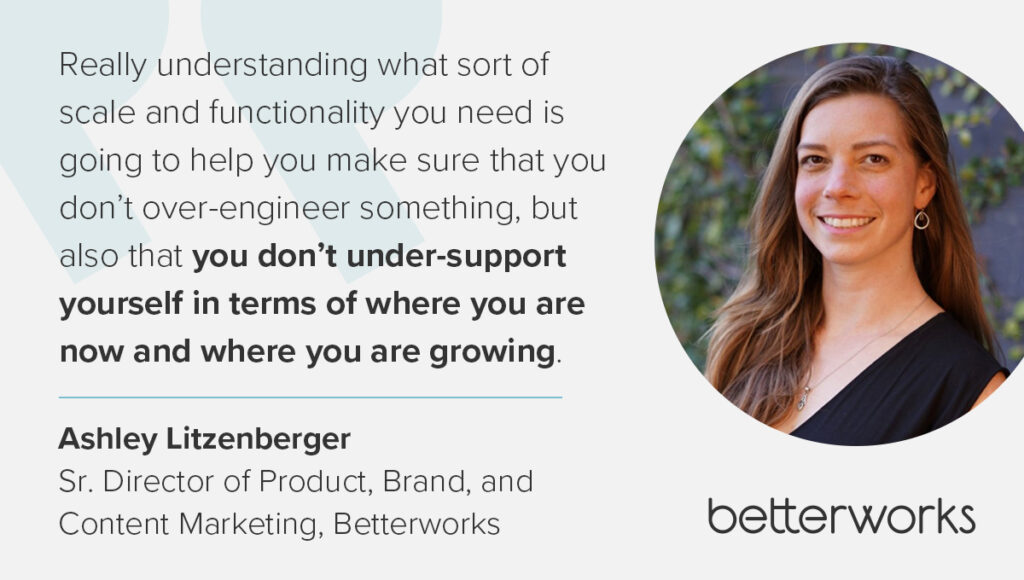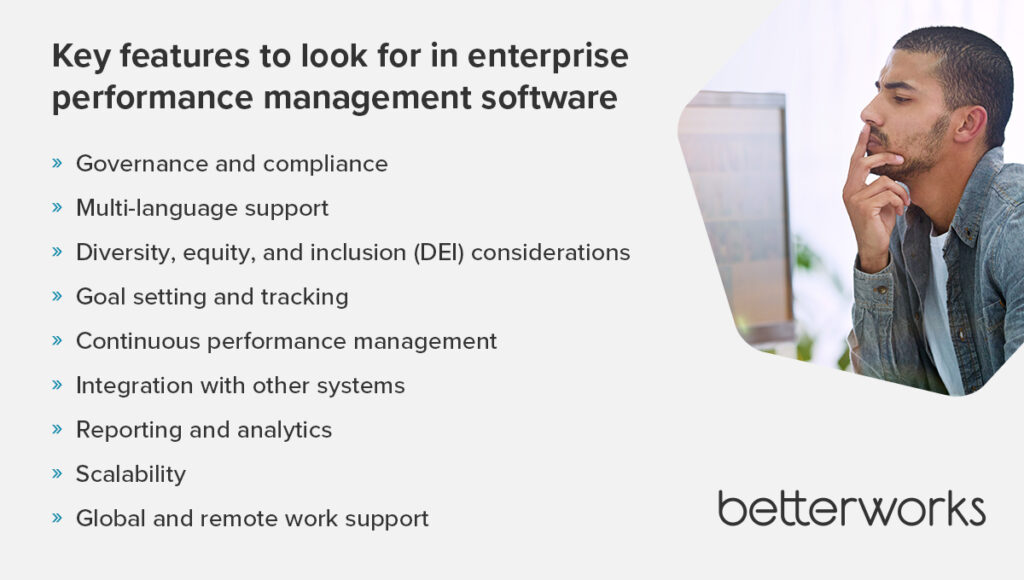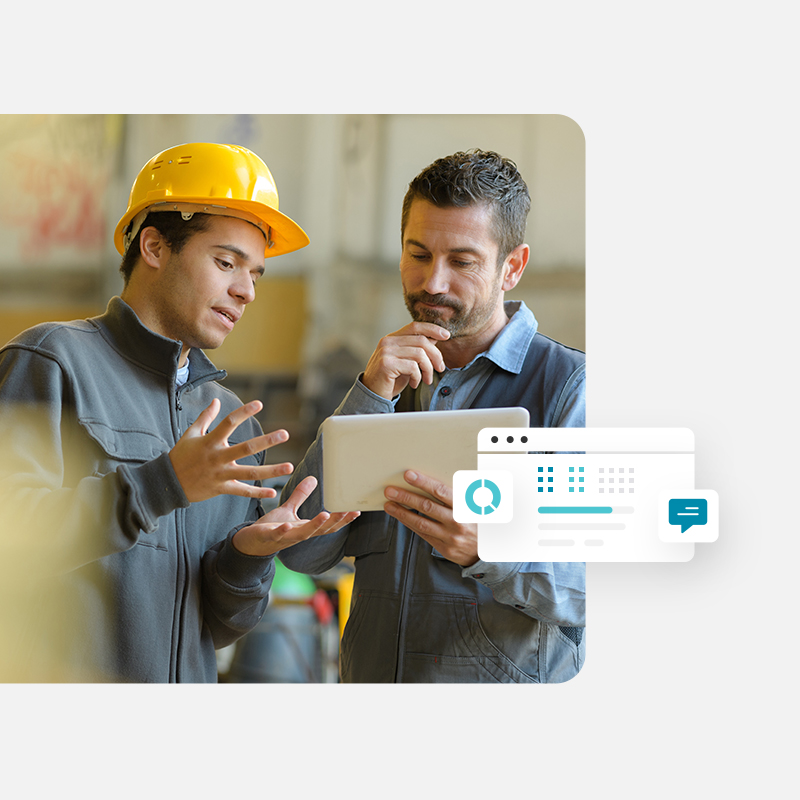As organizations grow, managing performance across diverse teams and locations becomes increasingly complex. Promoting consistent and fair evaluations, maintaining alignment with organizational goals, and fostering employee development across a large global workforce requires performance management software built for the enterprise.
Employees and managers alike require guidance and support to perform at their best, but these elements can be challenging to scale effectively. Our 2024 State of Performance Enablement report found that 2 in 5 employees don’t receive the guidance they need to succeed in their roles. Similarly, managers report feeling ill-equipped to handle evolving responsibilities.
The right performance management solution can help fill these gaps and scale the support your people need to thrive and continue building out your business. Find out how to choose the best performance management software for your growing organization.
Key features to look for in enterprise performance management software
In large organizations, performance management software needs to handle complex structures and lots of data. You need tools that are highly customizable, scalable, and capable of advanced analytics. Additionally, your growing business needs software that can scale performance management operations, like regular feedback and check-ins between managers and employees. As your company grows, your software should support consistent communication and performance tracking across all levels.

Check out some of the features you need to maximize performance management processes in an enterprise.
Governance and compliance
Prioritize governance and compliance in your performance management software. Make sure the software supports regulatory requirements and provides robust security features to protect sensitive data. By focusing on compliance, you maintain data integrity and confidentiality, meeting both local and international standards.
Multi-language support
Global organizations need multi-language support in performance management solutions. By accommodating various languages, you are able to ensure that performance management tools are inclusive and accessible for all employees. Betterworks, for example, offers extensive language capabilities, enabling every employee to participate meaningfully.
Diversity, equity, and inclusion (DEI) considerations
Support your DEI initiatives with performance management software that promotes unbiased evaluations. Look for features such as anonymized feedback to create an inclusive workplace culture where every employee feels valued. Choose software that actively addresses possible biases in performance reviews and encourages fair treatment for all groups.
Betterworks’ products, for example, are rooted in our shared commitment to diversity, equity, inclusion, and belonging. Because DEIB is a strategic priority, everyone who touches the product, from development to implementation, brings a heightened awareness of its impact on the lives of employees.
Goal setting and tracking
Setting and tracking employee goals is vital for effective performance enablement. Aligning individual goals with business goals sets everyone on a shared path toward achieving a common objective, fostering a sense of purpose and keeping team members motivated.
Using software to manage setting goals makes the process easier and more beneficial. For example, Betterworks offers features that support and simplify employee goal setting. Managers and employees can establish long-term goals, track progress in real time, and adjust plans as needed. This flexibility allows you to address issues quickly and keep goals relevant and achievable. By using such tools, you streamline the goal-setting process, improve accountability, and drive continuous performance improvement.
Continuous performance management
Many organizations today are shifting toward adopting a continuous performance management process rather than annual reviews. This transition promotes greater employee engagement, targeted development, and timely performance improvement. To facilitate this shift, you should choose performance management software that enables regular check-ins and real-time feedback tools.
By maintaining an ongoing dialogue, managers can keep employees connected to their work and aligned with organizational goals. Betterworks’ software makes it easy to add check-ins to the flow of work, which helps make feedback a regular part of your work culture.
Employees and managers can exchange feedback instantly with Betterworks’ real-time feedback abilities. This enables employees to quickly course correct, and also helps identify strengths and areas for improvement, leading to targeted employee development plans.
Integration with other systems
Enhance data flow and efficiency by integrating your performance management software with existing enterprise systems like HRIS and learning management systems. Connecting your chosen software to your current technology stack unifies all your performance management processes in one platform. Betterworks, for example, integrates with the tools you use every day in the flow of work, capturing performance data in real-time.
Reporting and analytics
Choose software that offers comprehensive analytics capabilities, including real-time dashboards and customizable reports. These features provide valuable insights into performance trends, helping you make data-driven decisions.
Transparent and accessible performance dashboards also allow you to share data with stakeholders across the organization. Managers, for example, can support their teams more effectively when they understand factors influencing engagement and productivity. Betterworks excels in this area, offering powerful analytics tools that empower managers with deep insights into their teams.
Scalability
Look for performance management software that scales with your organization. As your company grows, the software should adapt to increased user demands and new functional requirements. Scalable solutions prevent you from outgrowing your software and help you maintain efficient performance management processes even through growing pains.
“What you need to run effective performance management is going to be different at 50 employees versus 500 employees versus 5000 employees or 50,000 employees,” says Ashley Litzenberger, senior director of product, brand, and content marketing at Betterworks. “Really understanding what sort of scale and functionality you need is going to help you make sure that you don’t over-engineer something, but also that you don’t under-support yourself in terms of where you are now and where you are growing.”

Global and remote work support
Support your global and remote workforce with performance management software designed for distributed teams. Look for features that facilitate virtual check-ins, remote goal setting, and cloud-based feedback tools. These features ensure that all employees, no matter where they work, get the same help with their performance and development. The right system can help you create accountability and transparency within a team and across your organization, while also helping to strengthen trust and collaboration.

Evaluating and selecting performance management software
When evaluating and selecting performance management software, you need to consider several critical factors to ensure the solution fits your organization’s unique needs. From user-friendliness to integration capabilities, each aspect plays a crucial role in successfully implementing the software.
Below are some key criteria to guide your decision-making process when choosing performance management software for corporate use.
User-friendliness and adoption
To drive the right outcomes, your performance management software has to be easy to use. Nearly half of employees (44%) give current performance management processes in their organizations a failing grade. Tools that are difficult to use, or don’t facilitate the outcomes people need from it, contribute to that negative perception.
“If employees go into your platform and they can’t find where they need to do the work that they need to do within three to five seconds, they’re going to be out — and they’re not going to be using it,” says Hari Date, senior director of performance management architecture at Betterworks.
Focus on user-friendliness to guarantee effective adoption of your performance management software. Avoid complicated, clunky interfaces that hinder user adoption. Look for solutions with intuitive interfaces and easy-to-navigate features. Evaluate usability through demos and free trial runs to make sure the software meets your needs without overwhelming users.
Configuration and flexibility
Look for performance management tools you can configure to meet the specific needs of different departments and teams within your organization. Make sure any software you select allows you to tailor processes and workflows to match your unique requirements. Configurability remains key — whether you need to adjust performance review cycles or customize feedback forms, your software should adapt without requiring extensive technical knowledge.
Data accessibility and insights
Choose software that offers robust data accessibility and analytics capabilities. The software should not only collect data efficiently but also provide easy access to insights. Look for pre-built analytics and customizable dashboards that allow you to drill down into data and answer specific questions quickly.
This ability lets you give important information to everyone, from your top leaders to people managers. They can use that information to make informed decisions in the flow of work.
AI and automation capabilities
Consider performance management software that uses AI and automation to streamline processes and improve decision-making. AI can help analyze performance data and provide granular and predictive insights. Automation reduces administrative burden by handling routine tasks and allows your HR team to focus on strategic initiatives.
Automated tools handle routine tasks like scheduling check-ins and sending feedback reminders, ensuring managers maintain regular engagement with their teams. AI-driven performance analysis lets managers quickly find trends, strengths, and areas for improvement and makes feedback and goal-setting easier. Betterworks, for example, offers Conversation Assist, Feedback Assist, and Goal Assist to improve the quality and clarity of manager communications, provide leaders with personalized, constructive, and unbiased feedback for employees, and help employees quickly write clear goals that are aligned with their team’s and company’s goals.

Ongoing support and training
Evaluate the level of support and training the software vendor provides. Comprehensive training and ongoing support help you implement the platform successfully, improve user adoption, and adapt the tools to accommodate evolving needs. Look for vendors with a strong customer success team, a high customer NPS, and resources such as tutorials, webinars, and user communities to help you maximize the value of your performance management software.
For example, Betterworks offers extensive support, including a dedicated customer success team, detailed implementation guides, and a variety of training materials like webinars and tutorials. Their active user community also provides a platform for sharing best practices and troubleshooting, ensuring you get the most out of your performance management system.
Thought leadership and future orientation
Choose a vendor that demonstrates thought leadership and a forward-thinking approach to performance management. Vendors who actively contribute to industry best practices are more likely to proactively innovate their products to make sure that your software remains relevant and effective. Look for providers who invest in research and development and stay ahead of emerging trends in HR technology.
“You want a vendor that has the thought leadership and the insight to already have a vision and something in place that will get you to the future,” Hari says, “and can work with you to get you there.”

Challenges to watch out for
Choosing performance management software can present several challenges that organizations must navigate. As an HR leader or business decision-maker, getting ready for these possible problems early on helps make the software work better and makes it more useful. Addressing these challenges early on allows you to select a solution that aligns with your performance management processes and organizational goals.

Choosing the right performance management software
As you think about performance management software for your enterprise, consider the features you need to maintain compliance, drive performance, and help employees grow alongside your business. Addressing these factors helps you select a performance management solution that enhances employee performance, aligns individual and organizational goals, and fosters a culture of continuous improvement.
Want to learn more? Explore Betterworks’ performance management solutions.
Elevate performance with Betterworks




